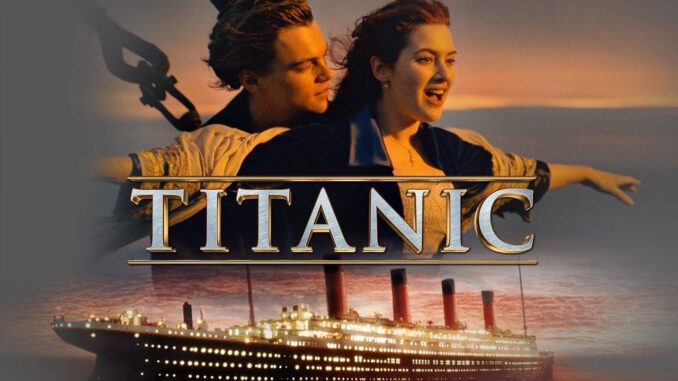
The year was 1997. The air thrummed with a pre-millennial hum, a mix of apprehension and eager anticipation for a new technological dawn. Then, James Cameron launched a vessel onto the silver screen, a cinematic behemoth that was, in its own way, as ambitious and awe-inspiring as the historical ship it depicted. Titanic wasn’t just a movie; it was an event, a cultural touchstone that immersed a generation in a meticulously crafted world of opulence, class divide, and a love story destined for legend and ruin.
To speak of Titanic (1997) is first to speak of its sheer, breathtaking scale. From the moment the digital bow sliced through the Atlantic current, one felt the immense weight of the undertaking. Cameron, a director known for his grand visions, recreated the “ship of dreams” with an almost fanatical devotion to detail. The polished brass, the grand staircase spiraling into a golden abyss, the clinking of champagne flutes in the First-Class dining saloon, the joyous jig of the Irish immigrants in steerage – every frame hummed with an almost tactile authenticity. It wasn’t just a set; it was a living, breathing character, its magnificent proportions a symbol of human ambition, hubris, and ultimately, its vulnerability to the relentless forces of nature. When the iceberg struck, it wasn’t just a rupture of steel but a tear in the fabric of this meticulously constructed dream, a visceral, chilling reminder of the fragility of even the grandest designs.
Yet, beyond the unparalleled spectacle and the impending doom that cast a shadow over every scene, Titanic‘s enduring power lay in the beating heart of its human drama. At its core, it was the improbable, star-crossed romance between Rose DeWitt Bukater, a stifled heiress entangled in a gilded cage of expectations, and Jack Dawson, the free-spirited artist with nothing but the clothes on his back and an abundance of life. Their initial encounters were a masterclass in slow-burn enchantment: the clumsy saving from a desperate leap, the daring sketch that captured Rose’s true spirit, the exhilarating, liberating dance in steerage. Through them, Cameron peeled back the layers of a rigid class system, showing the stark contrast between the icy decorum of the wealthy and the vibrant, uninhibited joy of those below deck. We saw not just a romance, but a yearning for freedom, an awakening of the soul, all unfolding against the grim inevitability of history.
The film’s illustrative strength lay in its ability to humanize the impending tragedy. It wasn’t just the statistics of a disaster; it was the poignant stories woven into the fabric of the sinking. We witnessed the terror of the steerage passengers trapped below decks, the quiet dignity of the orchestra playing on, the heartbreaking image of the elderly couple embracing in their cabin as the water rose around them, the stoic resolve of Captain Smith. Each vignette served as a testament to the myriad ways people faced their final moments – with courage, with despair, with love. The infamous “door scene,” often debated but undeniably iconic, became a powerful symbol of sacrifice and enduring grief, cementing Rose’s survival as a duty, a promise to carry Jack’s memory and live a life fully, for both of them.
Titanic wasn’t just a movie you watched; it was an experience you felt. It drew you into its grand scale, swept you up in its passionate romance, and ultimately, broke your heart with its devastating conclusion. It transcended its historical setting to explore universal themes: love and loss, class and privilege, fate and free will, the indomitable human spirit against the unforgiving forces of nature. Its impact resonated for years, spawning obsessive re-watches, sing-alongs to “My Heart Will Go On,” and a shared cultural memory that endures to this day. Titanic wasn’t just a film that sailed onto our screens; it docked firmly in our collective consciousness, a colossal monument to cinematic storytelling and the timeless power of a truly unforgettable love story.
https://vkvideo.ru/video-231358717_456239019
